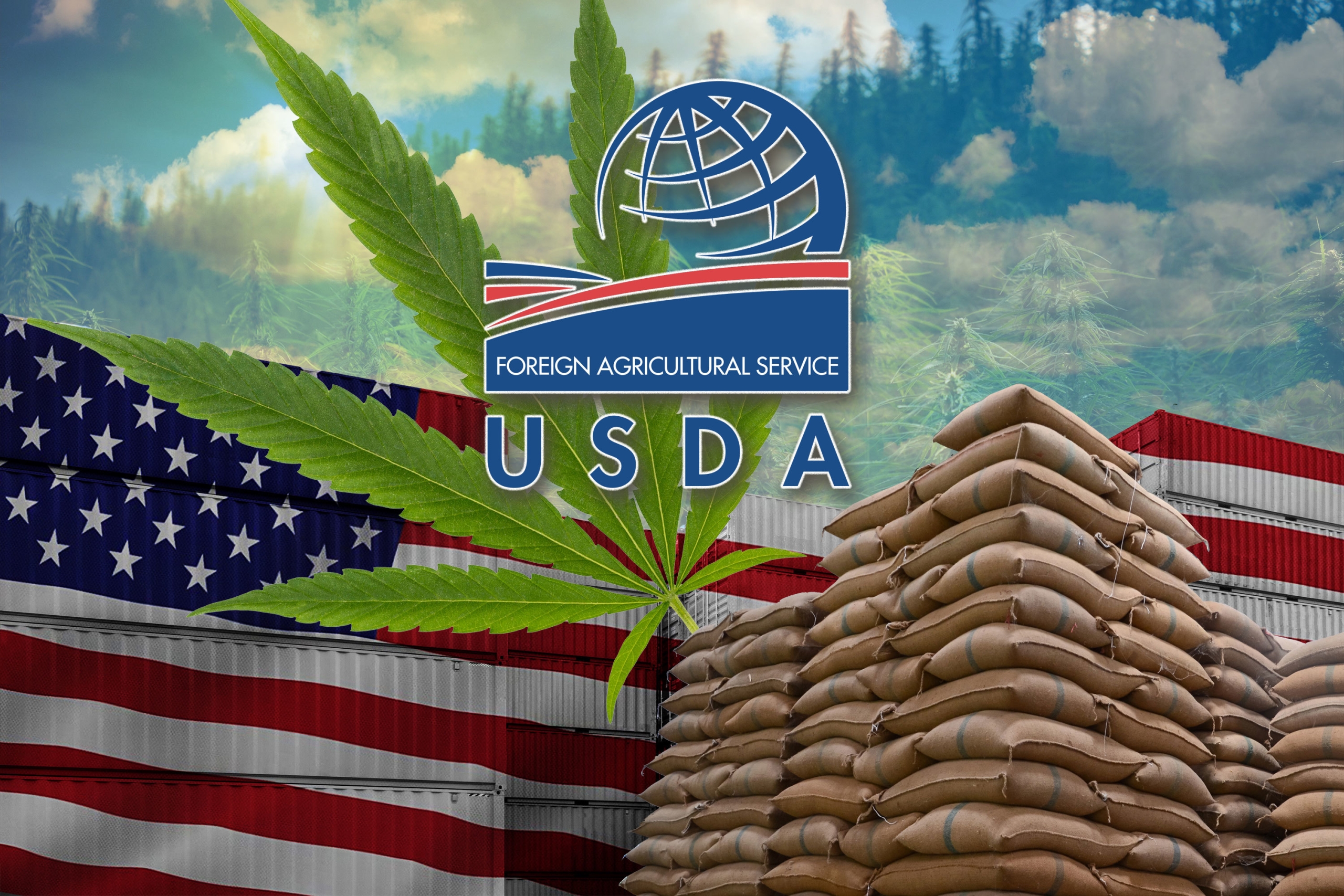Putting the U.S. Industrial Hemp Industry on the World Map
An Interview with NIHC’s Kevin Latner
 “We have developed a comprehensive plan based on NIHC vision and mission to promote U.S. worldwide,” explains Kevin Latner, NIHC’s Senior Vice President of Trade and Marketing. “Policy initiatives, trade facilitation, supply chain development and market development will provide the framework for U.S. export success.”
“We have developed a comprehensive plan based on NIHC vision and mission to promote U.S. worldwide,” explains Kevin Latner, NIHC’s Senior Vice President of Trade and Marketing. “Policy initiatives, trade facilitation, supply chain development and market development will provide the framework for U.S. export success.”
In November 2020, USDA’s Foreign Agricultural Service (FAS) notified the National Industrial Hemp Council (NIHC) that it had been approved as a recipient of Market Access Program (MAP) funds. The funding, should be available by April this year, provides NIHC the ability to grow the international market for the U.S. hemp industry. This will allow the hemp industry to develop program success such as other industries (e.g., peanuts, cotton, beer and wine, raisins, poultry and eggs, grains, dairy) have created in international trade opportunities for their industries through MAP programming.
Traditionally, MAP programming includes developing trade policy, trade facilitation, supply chain development, and market development. What will programming for NIHC look like? “As a new to market product and a first-year program NIHC, our first priority will be identifying market opportunities, including priority markets, and communicating about the quality and availability of U.S. product to those markets.”

Overview
Latner is spearheading the initiative and for good reason. He is an experienced executive leader, a change strategist and former U.S. diplomat. He has been in international agriculture and marketing for over 30 years delivering organizational leadership and operational excellence as a senior government, association and private sector leader. Specifically, his experience working at FAS for 15 years and running MAP programs for large participants provides NIHC the expertise to launch and maintain this initiative.
MAP programs extend to virtually every corner of the globe, helping to build markets for a wide variety U.S. farm and food products. FAS provides cost-share assistance to eligible U.S. organizations for activities such as consumer advertising, public relations, point-of-sale demonstrations, participation in trade fairs and exhibits, market research and technical assistance. When MAP funds are used for generic marketing and promotion, participants must contribute a minimum 10-percent match. For promotion of branded products, a dollar-for-dollar match is required.
It is quite an accomplishment to receive MAP funding. There is only $175 million distributed amongst competitive applicants. The requirements are rigorous to get and maintain the funding. “It is the widely recognized as one of the best public-private partnerships,” says Latner. MAP programs benefits not just an individual company, but the entire industry by leveling the playing field. Individual companies benefit through greater access and market opportunities internationally. According to market research by Informa, it was concluded that the return on investment for Market Access Program funds is 30-35 to 1.
Rigorous application criteria and a comprehensive application process ensures that funds are allocated through a competitive process. Applications must understand their markets, be able to report on trade and have developed meaningful performance metrics to evaluate program results. “In addition, NIHC’s leadership is bringing the industry together behind a unified banner on trade development that has been a critical component to securing funding,” explains Latner. “We look forward to continuing to work cooperatively with stakeholders as we use this funding on behalf of the industry.”
Export Readiness – Are You Ready?
While the appeal to reap the benefits of a 35-1 return on investment is attractive, Latner says you must be qualified to navigate international business. If you need help determining your export readiness, individual companies work through the NIHC, state departments of agriculture or the state regional trade groups (i.e., FoodExport, the Southern U.S. Trade Associationand the Western U.S. Trade Association). These organizations will help direct companies to international trade shows where business relationships can be built. Some organizations will even provide translators, offer translation services for marketing materials, and other support.
With the pandemic, business-building programming is sporadic, but NIHC’s long-term plans include trade missions and sponsoring international trade shows. “In a new industry, like hemp, the best way to do this is get in front of people to establish trust in relationships. We want to help create the marketplace to offer business-to-business marketing.”
The demand for hemp worldwide is growing, notes Latner. “Last year, Bloomberg estimated that by 2023 the hemp industry would be a $25 billion global market. NIHC’s implementation of the MAP program will allow the U.S. industry to communicate to government about market access challenges, better understand market opportunities and create business to business marketing opportunities,” he says.
Ultimately, NIHC’s implementation of the MAP will build market development opportunities for U.S. hemp exports through education and communication to government, business and, long-term, even consumer.
To ensure industry-focused programming, NIHC has a marketing subcommittee that provides strategic guidance on long-term goals and reviews implementation. “The committee provides critical input and represents the diversity of the hemp industry,” Latner explains.
More information will be coming throughout the year on MAP efforts. If your company has an interest in doing international business, now is the time to start planning ahead!














